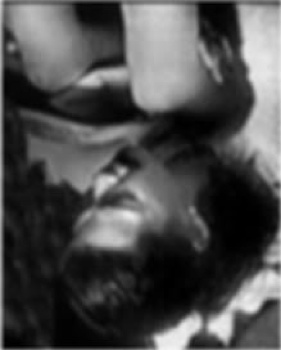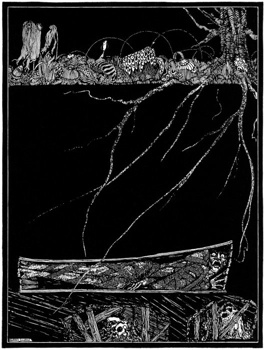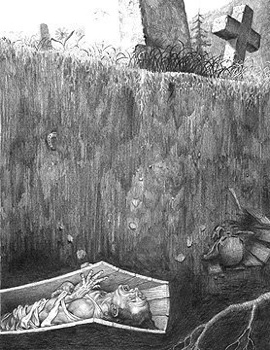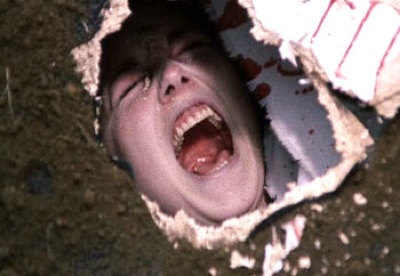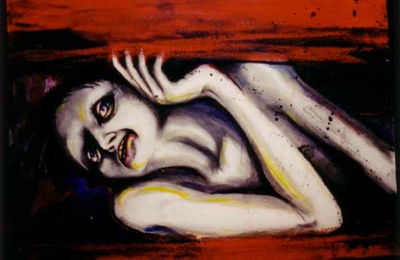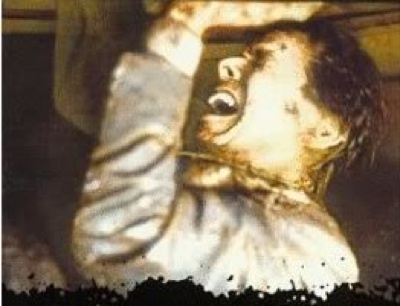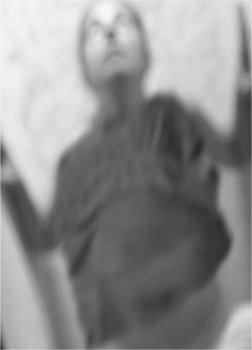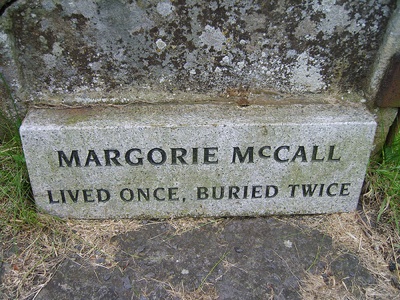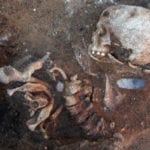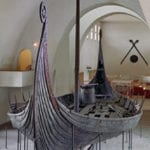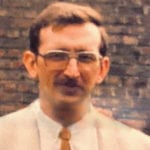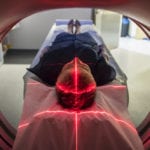 Our World
Our World  Our World
Our World  Pop Culture
Pop Culture 10 Incredible Female Comic Book Artists
 Crime
Crime 10 Terrifying Serial Killers from Centuries Ago
 Technology
Technology 10 Hilariously Over-Engineered Solutions to Simple Problems
 Miscellaneous
Miscellaneous 10 Ironic News Stories Straight out of an Alanis Morissette Song
 Politics
Politics 10 Lesser-Known Far-Right Groups of the 21st Century
 History
History Ten Revealing Facts about Daily Domestic Life in the Old West
 Weird Stuff
Weird Stuff 10 Everyday Products Surprisingly Made by Inmates
 Movies and TV
Movies and TV 10 Actors Dragged out of Retirement for One Key Role
 Creepy
Creepy 10 Lesser-Known Shapeshifter Legends from Around the World
 Our World
Our World 10 Science Facts That Will Change How You Look at the World
 Pop Culture
Pop Culture 10 Incredible Female Comic Book Artists
 Crime
Crime 10 Terrifying Serial Killers from Centuries Ago
Who's Behind Listverse?

Jamie Frater
Head Editor
Jamie founded Listverse due to an insatiable desire to share fascinating, obscure, and bizarre facts. He has been a guest speaker on numerous national radio and television stations and is a five time published author.
More About Us Technology
Technology 10 Hilariously Over-Engineered Solutions to Simple Problems
 Miscellaneous
Miscellaneous 10 Ironic News Stories Straight out of an Alanis Morissette Song
 Politics
Politics 10 Lesser-Known Far-Right Groups of the 21st Century
 History
History Ten Revealing Facts about Daily Domestic Life in the Old West
 Weird Stuff
Weird Stuff 10 Everyday Products Surprisingly Made by Inmates
 Movies and TV
Movies and TV 10 Actors Dragged out of Retirement for One Key Role
 Creepy
Creepy 10 Lesser-Known Shapeshifter Legends from Around the World
10 Horrifying Premature Burials
Being buried prematurely is one of the most terrifying of all fears. Edgar Allan Poe wrote about it and it has been the subject matter of many horror movies. Surprisingly real life cases of this terrible mistake are more common than one might think. Years ago when embalming wasn’t as common and because of inferior medical equipment to detect life there are numerous cases where people have had the terrifying experience of regaining consciousness in their own coffin. This list includes 10 such cases. Some sources for the list are from newspaper articles or journals and include the exact text which gives you a feeling of the time period. Another main source used for this list is a book written in 1905 called Premature Burial and How it May be Prevented which includes several actual cases of premature burials.
SEE ALSO: 10 Secrets Surrendered By Burial Grounds
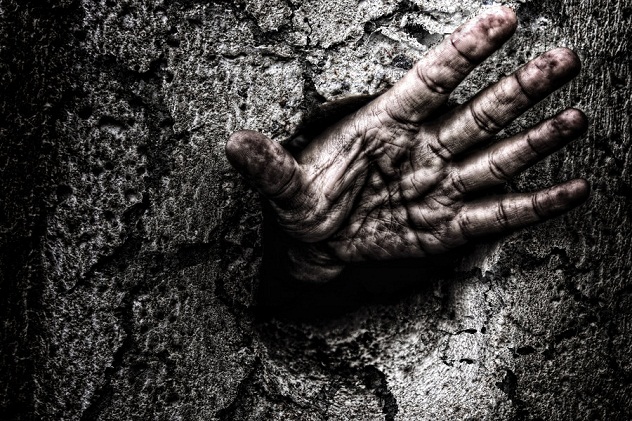
Virginia Macdonald lived with her father in New York City and became ill, died, and was buried in Greenwood Cemetery, Brooklyn. After the burial, her mother declared her belief that the daughter was not dead when buried and persistently asserted her belief. The family tried in vain to assure the mother of the death of her daughter. Finally the mother insisted so strenuously that her daughter was buried alive the family consented to have the body taken up. To their horror, they discovered the body lying on the side, the hands badly bitten, and every indication of a premature burial.
Interesting Fact: When the Les Innocents cemetery in Paris, France was moved from the center of the city to the suburbs the number of skeletons found face down convinced many people and several doctors that premature burial was very common.
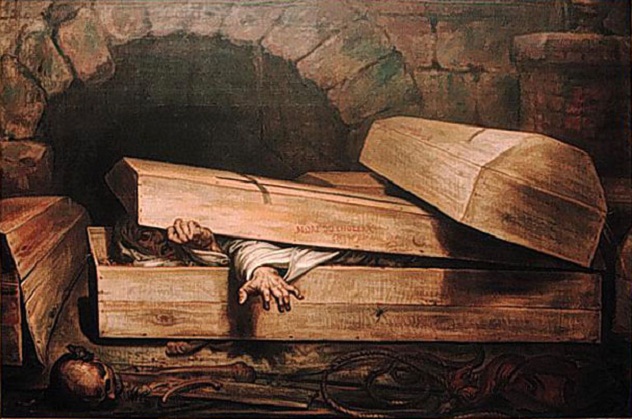
When Madam Blunden was thought to be dead, she was buried in the Blunden family vault at Holy Ghost Chapel in Basingstoke, England. The vault was situated beneath a boys’ school. The day after the funeral when the boys were playing they heard a noise from the vault below. After one of the boys ran and told his teacher about the noises the sexton was summoned. The vault and the coffin were opened just in time to witness her final breath. All possible means were used to resuscitate her but it was unsuccessful. In her agony she had torn frantically at her face and had bitten the nails off her fingers.
Interesting Fact: A large number of designs for safety coffins were patented during the 18th and 19th centuries. Safety coffin were fitted with a mechanism to allow the occupant to signal that he or she has been buried alive. You can see one of the variations here.
“WOODSTOCK, Ontario, Jan. 18- Recently a girl named Collins died here, as it was supposed, very suddenly. A day or two ago the body was exhumed, prior to its removal to another burial place, when the discovery was made that the girl had been buried alive. Her shroud was torn into shreds, her knees were drawn up to her chin, one of her arms was twisted under her head, and her features bore evidence of dreadful torture.”
Interesting Fact: In the 19th century, Dr. Timothy Clark Smith of Vermont was so concerned about the possibility of being buried alive that he arranged to be buried in a special crypt that included a breathing tube and a glass window in his grave marker that would permit him to peer out to the living world six feet above. You can see his grave here.
“GRENOBLE, Jan. 18- A gendarme was buried alive the other day in a village near Grenoble. The man had become intoxicated on potato brandy, and fell into a profound sleep. After twenty hours passed in slumber, his friends considered him to be dead, particularly as his body assumed the usual rigidity of a corpse. When the sexton, however, was lowering the remains of the ill-fated gendarme into the grave, he heard moans and knocks proceeding from the interior of the ‘four-boards.’ He immediately bored holes in the sides of the coffin, to let in air, and then knocked off the lid. The gendarme had, however, ceased to live, having horribly mutilated his head in his frantic but futile efforts to burst his coffin open.
Interesting Fact: The Fear of being buried alive is called taphephobia. The word “taphephobia” comes from the Greek “taphos” meaning “grave” + “phobia” from the Greek “phobos” meaning “fear” = literally, fear of the grave, or fear of being put in the grave while still alive.
“TONNEINS, Dec. 30- A frightful case of premature interment occurred not long since, at Tonneins, in the Lower Garonne. The victim, a man in the prime of life, had only a few shovelfuls of earth thrown into his grave when an indistinct noise was heard to proceed from his coffin. The grave-digger, terrified beyond description, instantly fled to seek assistance, and some time elapsed before his return, when the crowd, which had by this time collected in considerable numbers round the grave, insisted on the coffin being opened. As soon as the first boards had been removed, it was ascertained beyond a doubt, that the occupant had been interred alive. His countenance was frightfully contracted with the agony he had undergone, and, in his struggles, the unhappy man had forced his arms completely out of the winding sheet, in which they had been securely enveloped. A physician, who was on the spot, opened a vein, but no blood flowed. The sufferer was beyond the reach of art.”
Interesting Fact: In The Complete Worst-Case Scenario Survival Handbook, one of the worst case scenarios listed in the book is how to survive if you are buried alive in a coffin. If anyone finds themselves in the same predicament as the people on this list you can read some life saving information here.
“December 8- It appeared from the evidence that some time ago a woman was interred with all the usual formalities, it being believed that she was dead, while she was only in a trance. Some days afterwards, the grave in which she had been placed being opened for the reception of another body, it was found that the clothes which covered the unfortunate woman were torn to pieces, and that she had even broken her limbs in attempting to extricate herself from the living tomb. The Court, after hearing the case, sentenced the doctor who had signed the certificate of
decease, and the mayor who had authorized the interment, each to three months’ imprisonment for involuntary manslaughter.”
Interesting Fact: Today, when a definition of death is required, doctors usually turn to “brain death” to define a person as being clinically dead. People are considered dead when the electrical activity in their brain ceases.
“DAYTON, Feb. 8.-A sensation has been created here by the discovery of the fact that Miss Hockwalt, a young lady of high social connections, who was supposed to have died suddenly on Jan. 10, was buried alive. The terrible truth was discovered a few days ago, and since then it has been the talk of the city. The circumstance of Miss Hockwail’s death was peculiar. It occurred on the morning of the marriage of her brother to Miss Emma Schwind at Emannel’s Church. Shortly before 6 o’clock the young lady was dressing for the nuptials and had gone into the kitchen. A few moments afterward she was found sitting on a chair with her head leaning against a wall and apparently lifeless. Medical aid was summoned in, Dr. Jewett who, after examination, pronounced her dead. Mass was being read at the time in Emannel’s Church and it was thought best to continue, and the marriage was performed in gloom. The examination showed that Anna was of excitable temperament, nervous, and affected with sympathetic palpitation of the heart. Dr. Jewett thought this was the cause of her supposed death. On the following day, the lady was interred in the Woodland. The friends of Miss Hockwalt were unable to forget the terrible impression and several ladies observe that her eyes bore a remarkably natural color and could not dispel an idea that she was not dead. They conveyed their opinion to Annie’s parents and the thought preyed upon them so that the body was taken from the grave. It was stated that when the coffin was opened it was discovered that the supposed inanimate body had turned upon its right side. The hair had been torn out in handfuls and the flesh had been bitten from the fingers. The body was reinterred and efforts made to suppress the facts, but there are those who state they saw the body and know the facts to be as narrated.”
Interesting Fact: In 1822 Dr Adolf Gutsmuth was buried alive several times to demonstrate a safety coffin he had designed. Once he stayed underground for several hours and ate a meal of soup, sausages and beer delivered to him through the coffin’s feeding tube.
Seventeen year old Mary Norah Best was the adopted daughter of Mrs. Moore Chew. Mary was pronounced dead from cholera and entombed in the Chew’s vault in an old French cemetery in Calcutta. The surgeon that pronounced her dead was a man who would have benefited by her death and had tried to kill her adopted mother. Before Mary “died” her adoptive mother fled to England after the second attempt on her life and left Mary behind. Mary was put into a pine coffin and it was nailed shut. Ten years later, in 1881 the vault was unsealed to admit the body of Mrs. Moore’s brother. On entering the vault, the undertaker’s assistant found the lid off of Mary’s coffin on the floor. The position of her skeleton was half in and half out of the coffin. Apparently after being entombed Mary awoke from the trance and struggled violently till she was able to force the lid off of her coffin. It is surmised that after bursting open her casket she fainted from the strain and while falling forward over the edge of her coffin she struck her head against the masonry shelf killing her. It is believed the surgeon poisoned the girl and then certified her death.
Interesting Fact: Some believe Thomas A Kempis, a German Augustinian monk who wrote The Imitation of Christ in the 1400’s was denied canonization because splinters were found embedded under his nails. Canonization authorities determined that anyone aspiring to be a saint would not fight death if he found himself buried alive.
“ASHEVILLE, N.C., Feb. 20.–A gentleman from Flat Creek Township in this (Buncombe) County, furnishes the information that about the 20th of last month a young man by the name of Jenkins, who had been sick with fever for several weeks, was thought to have died. He became speechless, his flesh was cold and clammy, and he could not be aroused, and there appeared to be no action of the pulse and heart. He was thought to be dead and was prepared for burial, and was noticed at the time that there was no stiffness in any of the limbs. He was buried after his supposed death, and when put in the coffin it was remarked that he was as limber as a live man. There was much talk in the neighborhood about the case and the opinion was frequently expressed that Jenkins had been buried alive. Nothing was done about the matter until the 10th inst., when the coffin was taken up for the purpose of removal and internment in the family burying ground in Henderson County. The coffin being wood, it was suggested that it be opened in order to see if the body was in such condition that it could be hauled 20 miles without being put in a metallic casket. The coffin was opened, and to the great astonishment and horror of his relatives the body was lying face downward, and the hair had been pulled from the head in great quantities, and there was scratches of the finger nails on the inside of the lid and sides of the coffin. These facts caused great excitement and all acquainted personally with the facts believe Jenkins was in a trance, or that animation was apparently suspended, and that he was not really dead when buried and that he returned to consciousness only to find himself buried and beyond help. The body was then taken to Henderson County and reinterred. The relatives are distressed beyond measure at what they term criminal carelessness in not being absolutely sure Jenkins was dead before he was buried.”
Interesting Fact: Because of the concern of premature burials a Society was formed called Society for the Prevention of People Being Buried Alive. They encouraged the slow process of burials.
In 1901 a pregnant Madame Bobin arrived on board a steamer from Western Africa and appeared to be suffering from yellow fever. She was then transferred to a hospital for those affected with contagious diseases. There she became worse and apparently died and was buried. A nurse later said she noticed that the body was not cold and that there was tremulousness of the muscles of the abdomen and expressed the opinion that she could have been prematurely buried. After this was reported to Madame Bobin’s father, he had the body exhumed. They were horrified to find that a baby had been born and died with Madame Bobin in the coffin. An autopsy showed that Madame Bobin had not contracted yellow fever and had died from asphyxiation in the coffin. A suit against the health officials resulted in £8,000 ($13,000) damages against them.
Interesting Fact: Historical records indicate that during the 17th century when plague victims often collapsed seemingly dead, there were 149 actual cases of people being buried alive.
This is a bonus because this event might be more folklore than fact. In researching premature burials this story came up many times with different names and locations as this Wikipedia article explains. However Snopes.com does give a story similar to this a “True” rating. My guess is that something like this probably did occur somewhere at sometime but the story has been embellished over the years. Margorie McCall’s story seems to be the most popular and goes something like this: Margorie McCall from Northern Ireland fell ill and was pronounced dead. After her wake which lasted for a few days she was interred in Shankill Graveyard. That night her body was exhumed by grave robbers. The robbers tried in vain to remove a ring from her finger and then attempted to cut her finger off to remove the ring. When they were cutting into her finger Margorie suddenly came to and the robbers fled the cemetery never looking back. Margorie then climbed out of her coffin and walked home. Meanwhile her family was gathered at home when they heard a knock at the door. Margorie’s husband still in grief said “if your mother were still alive, I’d swear that was her knock.” and sure enough when he opened the door there she was dressed in her burial clothes, very much alive. Her husband fainted immediately.
Interesting Fact: Many believe the terms “Saved by the bell” and “Dead ringer” has to do with safety coffins with the notion that a recently buried person could pull a rope attached to a bell outside the coffin to alert people that he or she is not deceased. Both of these have been proven false. Saved by the bell is a boxing term dating from the 1930s. Ringer is from horse racing and is a horse substituted for another of similar appearance in order to defraud the bookies. Dead was then added to the term later like ‘dead on’, ‘dead center’ etc.
